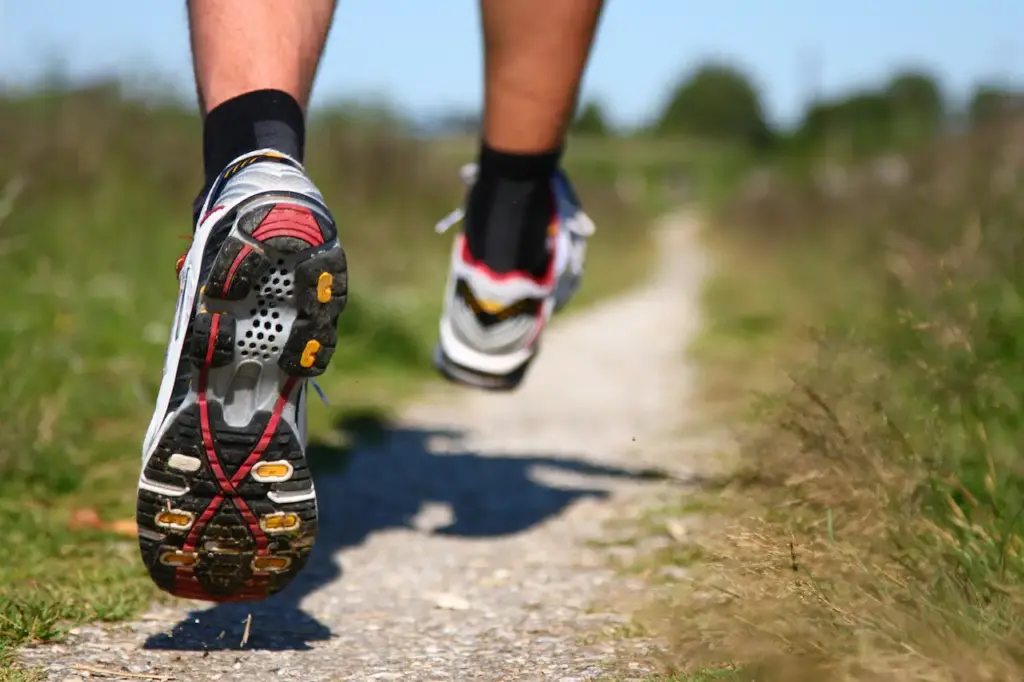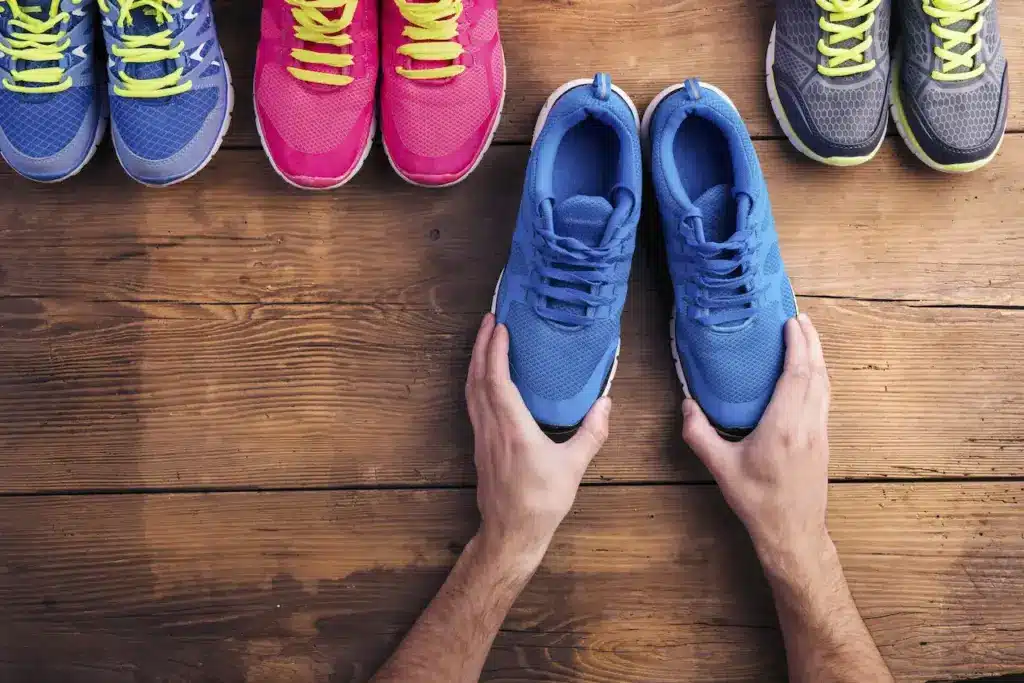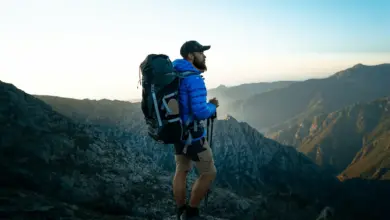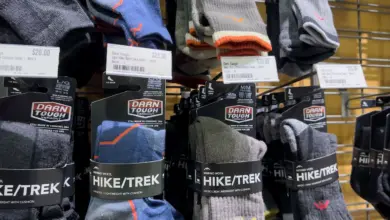Hiking is one of the most popular outdoor recreational activities. Getting outside into nature provides exercise along with mental health benefits. To fully enjoy hiking, having proper footwear is essential. Many novice hikers wonder if expensive hiking boots designed specifically for rugged terrain are necessary or if running shoes can work just fine for hitting the trails.
In this article, we dive into the debate in detail, analyzing the pros and cons of using running shoes for hiking in different types of terrain. We examine key factors when considering trail runners versus hiking boots, including grip, stability, weight, breathability, protection, and durability.
Additionally, we differentiate between road running shoes versus trail running shoes to help you make an informed decision on footwear for your next big hike. After reading, you’ll have a better understanding of when running shoes are perfectly suitable for hiking needs, as well as scenarios where sturdy hiking boots are highly recommended for performance and safety.

Why You Don’t Need Hiking Boots
Specialty hiking boots offer many benefits for challenging backcountry terrain thanks to their sturdy build and design elements meant to provide stability, traction, and protection miles from civilization. However, they come with downsides, including higher costs, lengthy break-in periods, heavier weight, and reduced flexibility.
For these reasons, when doing casual day hiking on easier, well-maintained trails closer to home, running shoes can actually be a better performer and more comfortable option over hardcore hiking boots.
Lighter Weight Encourages Distance
One significant advantage trail running shoes have over traditional hiking boots is drastically lighter overall weight. Built with flexible mesh materials and soft foam midsoles, most running shoes for mountain terrain come in 25-40% lighter than clunky boots.
This reduced weight translates directly into less fatigue over the course of a full day, covering 5, 10, or 15+ miles of trail.
The improved energy savings means more distance travelled and longer hikes become possible without burning out your feet. Even novice hikers find trail running shoes allow them to hike further faster while feeling fresher afterwards.
Increased All-Day Comfort
In addition to cutting weight, trail running shoes provide more cushioning and flex, which quickly leads to superior comfort even over long distances. The plush foam cushion and play in the soft sole reduce pain and hot spots, allowing you to push late into the afternoon.
Additionally, running shoes require virtually no break-in period out of the box, unlike stiff hiking boots, needing weeks to properly mould to your feet before all-day comfort. Certainly, after a huge day of trail running, shoes have the advantage of keeping feet happier.
Better Grip & Traction When Needed Most
Surprisingly, trail runners can provide even better grip and traction over hiking boots in many conditions thanks to advanced sole tread designs. Companies like Salomon and inov-8 engineer deep multidirectional lugs spaced closely together in patterns that grab terrain in all directions.
Combined with sticky rubber compounds, these shoes dig into the dirt, mud, and scree, establishing a solid foothold to push off from mid-hike.
The flexibility in the soft shoe also allows more contact points with the ground. When choices are unsure, trail runners get extra sticky for even more technical terrain.
When Running Shoes Excel on The Trail
Taking all the above benefits together with lower weight, increased comfort, and traction optimized for dirt and mud – it’s easy to see why trail running shoes make a lot of sense for most casual day hiking adventures and even aggressively marching uphill on shorter overnight backpacking trips.
Anybody who hasn’t tried light hikers owes it to themselves to test run some miles in well-designed trail runners the next time they set boots down for an afternoon outside. Just don’t expect true hiking boots with a level of robust ankle support and toe protection when dealing with truly rugged mountain terrain filled with sharp rocks or brutal Arctic cold.
Yet, it is surprising how far some running shoes can still take you these days.
Not All Running Shoes Are Equal
If deciding to lace up trail running shoes for logging miles in the woods, it’s critically important to choose appropriate footwear designed specifically for off-road activities rather than old road runners languishing in your closet since the 1980s.
Road and trail running shoes differ greatly when it comes to the level of traction, grip, stability, and protection required for uneven ground versus smooth, hardtop surfaces. Simply put, you wouldn’t bring basketball high tops for hiking muddy trails.
The same goes for road-running kicks. Let’s break down key design differences every outdoor enthusiast should understand before going half-cocked into the wilderness.

Built For Uneven Terrain
The singular purpose behind trail running shoes is to provide grip and balance over constantly changing dirt, rocks, roots, and whatever knotty terrain nature has in store without rolling an ankle or losing speed hustling uphill.
While road runners focus on breathability and weight reduction for marathon distances on pavement, trail runners flip priorities, optimizing extremely grippy multidirectional outsoles, reinforced toe bumpers, and anti-debris upper protection critical to successfully navigating backcountry trails at speed while giving zero care towards fast race times clocking miles downtown.
Simply put, off-road shoes dig in, allowing adventure far from roads, while on-road kicks prioritize velocity on flats.
Trail Shoes Strike Right Balance
Quality trail runners carefully balance lightweight meshes for ventilation during high output activities against durable textiles across toes and wrapping feet necessary for increased resistance against abrasions from brush, scrapes on granite, and ankle stability required when carrying big weight off-trail exploring high country.
Expect open weaves draining water on shoe tops combined with supportive mid-foot cages locking in feet, protective rubberized toe caps, and tight gripping lugs underfoot standing up to endless roots crisscrossing Appalachian path miles.
Through advancements in exotic fabrics and injection moulding, trail runners handshake the best aspects for endurance athletes, requiring versatility stretching from rocky summits down to desert washes in a single well-designed robust package ready out of the box for backcountry abuse.
Road Running Shoes vs Trail Running Shoes
Road and trail running shoes differ dramatically in intended use cases. Let’s examine the nuanced pros and cons of each shoe type to determine the optimal choice depending on planned on-road usage versus off-road adventures better assisted with grippy trail runners. We’ll analyze subtle design decisions around grip, toe protection, ventilation, and ankle support separating chargers from hikers.
Lugs Hook Uneven Terrain
Starting from the ground up, aggressively lugged sole patterns give trail shoes a decisive advantage in digging into loose dirt and wet surfaces for maintaining friction uphill, even when loaded heavy for overnight missions into the wilderness.
Multi-angled lugs sized 5-7mm deep chew steep inclines covered in pine needles without slippage while confidently scattering small loose rocks across talus fields.
Meanwhile, road runners focus on increased surface area for hard flats maximizing straight line speed optimized for pavement measured in single track 100s of meters. Lug life and sideways traction favour trail shoes.
Toe Bumpers Deflect Bruising Rocks
Moving upwards, trail shoes combat rocky trails with extra armour protecting fragile toe boxes from loose stones underfoot, seeking to bang up feet and ruin carefully planned vacations with purple-black nails.
Solid synthetic rubber caps shield shoe fronts, taking repeated hits mile after mile across questionable footing off the beaten track.
At the same time, road shoes cut every possible corner on weight, subtracting critical grams necessary for elite racers to shave precious seconds off personal best finishing times, so forget about guarding piggies on asphalt. Toe Protection awards another win for trail shoes holding their own on gnarly terrain.
Breathable Meshes Release Heat/Moisture
Ventilation and moisture management often decide whether feet stay comfortable, cool, and dry over 20+ kilometre training runs versus blistered, hot, and rubbled. Due to road shoes prioritizing lightweight and speed, manufacturers incorporate highly breathable meshes covered in microscopic perforations, unleashing ventilation crucial for elite racers’ constantly increasing tempo.
Conversely, trail shoes understand brush constantly threatens to breach uppers on off-camber switchbacks, so they tend to select durable fabric blends aligning durability, stretch, and ventilation required for protecting feet during scramble approaches yet still breathing enough to avoid swamp foot on extended mountain trips. Different goals demand specialized materials selection.
Ankle Support Saves Sprains On Tricky Terrain
Top-designed trail shoes integrate subtle structural supports around ankles, knowing one wrong step on scree fields could spell disaster miles from medical assistance. So they add flexible exoskeletons hugging feet for extra alignment insurance against loose rocks waiting to jump errant steps.
Meanwhile, road runners forego such emergency precautions, prioritizing each and every step and landing true on well-packed, predictable pavement during speed interval training. For mountain adventures alone, trail shoes reinforce ankles for unavoidable sprains. Stick to roads for race day.
When Running Shoes Are a Bad Idea
Certainly, modern trail running shoes serve admirably, tackling so much terrain. But even advanced shoe technologies still can’t protect feet adequately for specific hiking scenarios.
Let’s explore potentially painful misapplications demanding hardcore hiking boots instead of runners pretending away shortcomings.
Rocky Surfaces Shred Mesh Skin

Jagged slab rock geography easily overwhelms beefed-up toe guards on well-respected off-road kicks, opening them up to sudden blowout failures too far out to limp home lightly.
Relentlessly razor terrain slices apart mesh fabrics designed for optimal breathability rather than pure durability, leaving feet horrifically unprotected and panicking miles from the trailhead.
Only overbuilt hiking boots incorporating thick leather skins handle such technical rock gardening, preventing frightening wounds, so choose footwear wisely. Don’t let expensive Compeed blister bandaids replace common sense!
Cold Weather Demands Insulation
Trail running kicks built chiefly for warm Spring/Summer/Fall usage incorporate highly vented fabrics unsuitable for heat retention required when Mt Hood decides to deliver an unexpected early winter blast moments after you depart blithely under-equipped. Dainty frames freeze solid as iced lattes the second white-outs roll in.
Even Gore-Tex lined versions sacrifice critical insulating loft warming toes for water resistance against melted snow. Only full-grain hairy giants surround feet in protective dead air, keeping tender piggies thawed and happy no matter how violent the surprise storm. Make sure boots suit multi-season mountain realities before exposure shuts down all feeling.
Soaked Feet Sap Heat Fast
Facing multiple steam crossings or soggy bog fields risks quickly overwhelming waterproof membranes built into mesh trail runners fast saturating fabrics inescapably strapped to feet for too many cold hypothermic miles still left hiking out.
Consider instead using time-tested quick-lacing boots proving themselves on billion plodding steps by hunters, anglers, and field geologists who demand feet stay bone dry though any sloppy obstacle in their path towards home and a warm hearth.
Let tired dogs rest easy, wrapped in waterproof, supple leather boots, shrugging off river soakings while returning energy towards enjoying the views instead of worrying about pruning skin.
Unstable Ankles Under Heavy Packs
Loading multiple days’ worth of equipment into an overnight wilderness backpacking kit easily overmatches featherweight trail shoes missing crucial stiffness stabilizing ankles once total pack weight grows beyond a mere fanny pack and water bottle.
Ultralight runners bounce tired joints sideways over uneven miles, quickly compressing vertebrae and tempting nasty uncontrolled falls once the body fatigues, shouldering real weight mile after mile.
Trust unbreakable hiking boots firmly standing ground against twisting failure when undertaking serious expeditions into high country committed days walk from roads demanding proven stability when it matters most. Don’t gamble with exhaustion miles past the point of no return.
Long Distances Demand Durability
Ambitious multi-day thru-hikes tackling hundreds of miles over extreme elevation changes expose trail runners to unavoidable material failures from endless erosion wearing down integrated stability components and traction lugs critical to avoiding mechanical failure far from re-supply.
Only boots specifically engineered for endless long hauls incorporate replaceable shanks and soles ready for the long run to Canada. Don’t find out too late that your favourite trail shoes can’t go the distance after limping endlessly on shredded mesh and gone lugs with the northern terminus still nowhere in sight through the pain.
Choose icons passed proudly through generations marching journeys into history books rather than much-abused running shoes donated shamefully to history’s trash bins.
FAQs
Are running shoes good for hiking?
For casual day hiking over moderate terrain in dry conditions, trail running shoes can work quite well and be very comfortable. They are lighter weight and more breathable than bulky hiking boots. Just recognize running shoes lack the ankle support and durability for more rugged hikes.
Can I hike in road running shoes?
Road shoes lack the deep, aggressive tread and durable uppers required for hiking off-road. Only wear trail running shoes designed specifically for uneven terrain and obstacles if using runners for hiking.
What should I look for in a trail running shoe for hiking?
Seeking deep multidirectional lugs for traction plus reinforced toes and anti-debris mesh uppers. The shoes must strike a balance between ventilation and durability for hitting the trails.
Do trail running shoes have a good grip?
Yes, trail runners often have a grippy rubber compound plus lug depths between 5-7mm for digging into the dirt, mud, and uneven terrain. The grip keeps you from slipping on steep and loose surfaces.
Can I hike in cold weather with running shoes?
No, the highly breathable mesh uppers and lack of insulation in trail runners make them a poor choice for cold conditions where you need to trap heat and keep your feet warm.
Are running shoes good for backpacking?
For short overnight trips with lower pack weights, trail runners provide needed grip and stability while keeping pack weight down. However, the lack of stiffness and support makes them risky for extended expeditions with heavy loads.

What shoes should I avoid for hiking?
Road running shoes lack the durability and traction elements of trail running shoes. Also, avoid sneaker-style “fashion hiking” shoes that resemble runners, as they won’t stand up to truly rugged terrain either.
Conclusion
After reviewing detailed differences between trail running shoes and hiking boots, hopefully, readers will better understand key decision points guiding optimal footwear selection depending on intended usage, priorities, and trip duration.
Light and fast short hauls favour supple runners, while overloaded extended expeditions demand only trustworthy boots standing the test of time.
Analyze carefully your packing list total mileage both up and downhill alongside calendar length for the full adventure before lacing decisions best made ahead of time rather than mid-trip. An informed start almost guarantees happy feet every step along the trail for years of future fun!




Nicely written article, thank you Ben